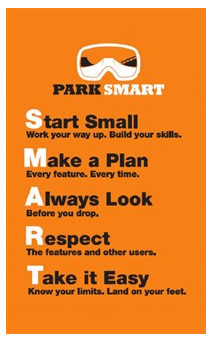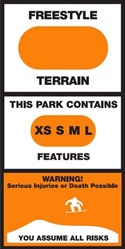Freestyle Terrain Safety
The National Ski Areas Association and Burton Snowboards would like to welcome you to the "Park Smart" Terrain Park Safety initiative. Park Smart is a cooperative effort with the help of the Professional Ski Instructors of America (PSIA) and the American Association of Snowboard Instructors (AASI) and National Ski Patrol (NSP) that emphasizes the proper use of terrain parks while delivering a unified message.
The Park Smart video below, along with TerrainParkSafety.org, work together to emphasize the importance of safety in terrain parks across the country. We are currently updating www.TerrainParkSafety.org with the most recent resources and information for the Park Smart program.

Park Smart Terrain Park Safety Program Messages:
START SMALL - Work your way up. Build your skills.
MAKE A PLAN - Every feature. Every time.
ALWAYS LOOK - Before you drop.
RESPECT - The features and other users.
TAKE IT EASY - Know your limits. Land on your feet.


Spreading the message is important. Don't go if you don't know!